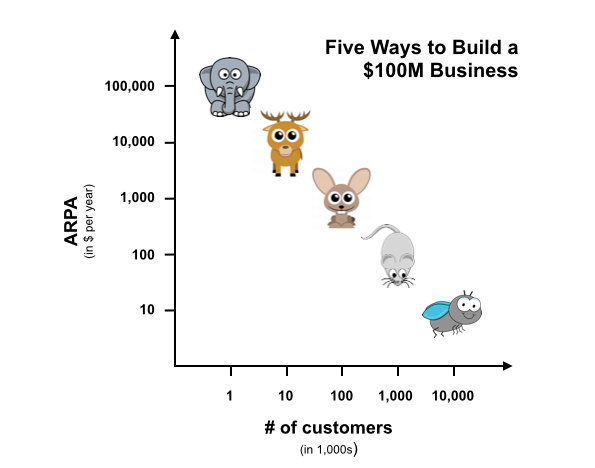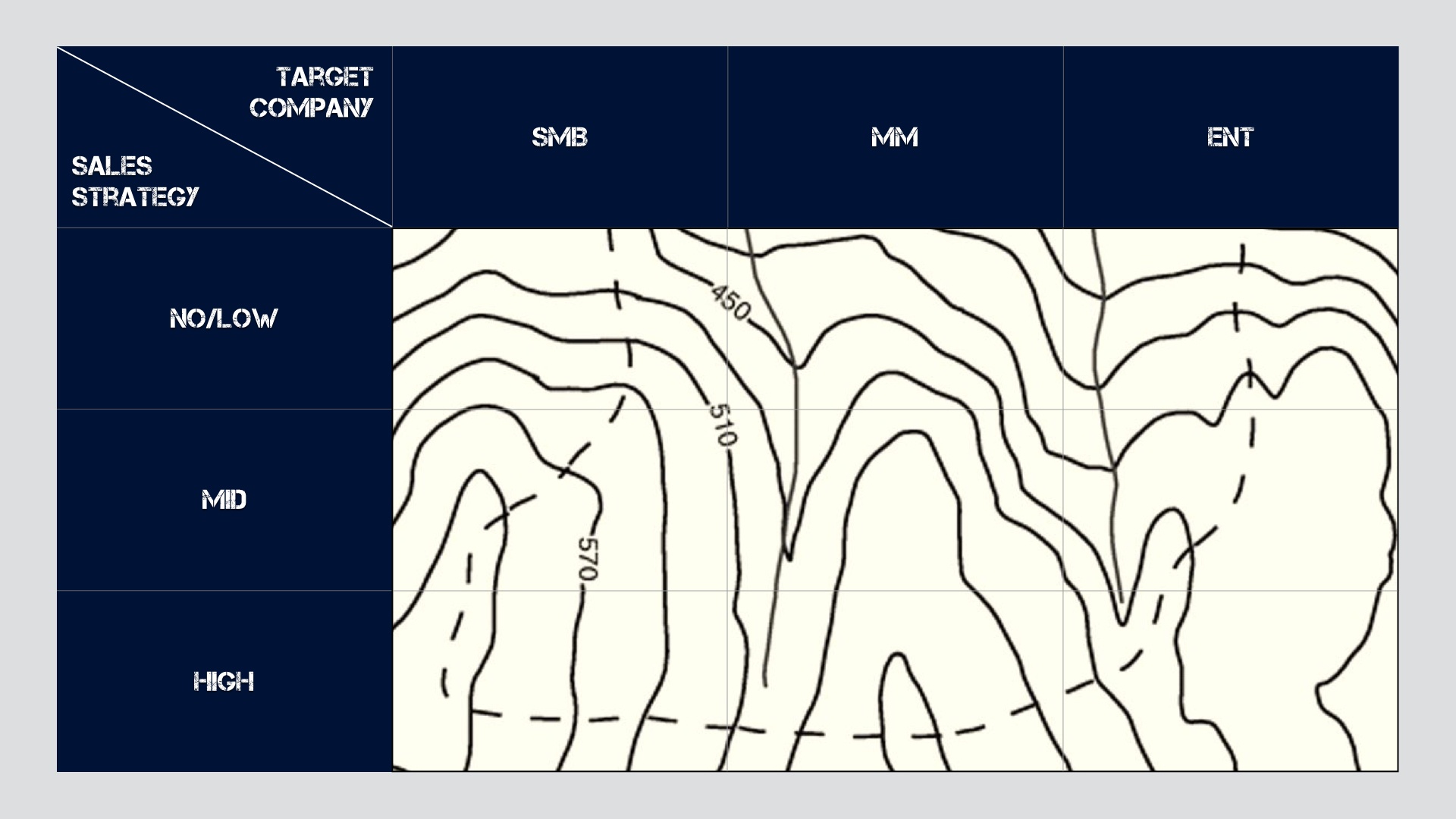The math behind your SaaS go-to-market strategy can determine whether your business is going to succeed or fail before you’ve even launched your product.
If you have a low lifetime-value product with a high sales cost, it won’t work.
If your price point is low, but your goals are lofty, you’re going to need to build Facebook-like engagement to hit those goals.
Before launching your SaaS product, it’s crucial to develop a successful approach to marketing and selling.
Knowing which marketing and sales approaches will drive revenue requires defining your goals, identifying the audience that will allow you to hit those goals, and forming a strategy that’s catered to that audience.
By using the following go-to-market strategy examples, you can brainstorm the details of your launch, marketing, and sales strategies to set your SaaS product up for success from day one.
When building a go-to-market strategy for startups, many SaaS companies turn to Christoph Janz’s framework for building a $100 million business.

Christoph Janz, Managing Partner at Point Nine Capital.
Janz’s framework is based on simple math, highlighting how many customers it takes to get to $100 million dollars, or £100 million for UK businesses, in annual recurring revenue (ARR) at different price points.
To get to £100 million ARR, you need one of the following:
If that seems confusing – don’t worry. Christoph produced a nice illustration to make things a little less complicated:

Image courtesy of Christoph Janz. The y-axis shows the average revenue per account (ARPA) per year. In the x-axis you can see how many customers you need, for a given ARPA, to get to $100 million in annual revenues. Both axes use a logarithmic scale.
Of course, £100 million in ARR may feel like a lofty goal. But the basic premise is that it’s important to take time to define your ARR goal, and do the math to evaluate the likelihood of meeting that goal long-term.
The likelihood of meeting that goal is dependent on your price point and how many customers you can convert and retain.
Let’s say, for example, that you just want to hit £1 million in ARR.
If your price point is £1,000 per year, you’ll need 1,000 customers to meet your goal.
First, you need to determine if that goal is feasible:
If the goal seems feasible, then you formulate your go-to-market strategy and marketing plan around attracting customers who can afford to pay £1,000 per year for your service.
In this scenario, you’re likely targeting small businesses.
Janz argues that the best marketing for small businesses is inbound marketing, so your go-to-market strategy and marketing plan should be focused on content, social media, email, and influencer marketing, as well as display and PPC advertising.
Drive prospects to your website to convert.
A large sales team doesn’t necessarily have a place in this model because small businesses are less likely to respond to cold calls, and many customers will likely convert on their own without ever needing to speak to a sales representative.
On the other hand, if you’re targeting enterprise businesses at a price point of £100,000+ per year, a large sales team may be more important than a heavy focus on inbound marketing.
The best SaaS go-to-market strategy considers the long-term goals of the business, determines what type of and how many customers will be needed to hit those goals, and uses the math to build a plan for how to target and convert those customers.
Edward Ford, SaaS Growth Marketer at Advance B2B, recommends that SaaS companies looking to develop a go-to-market strategy adopt The Mission Matrix framework.
The Mission Matrix begins—like Janz’s framework—with knowing your ideal customer, though the types of customers you might target are narrowed down to three: small and mid-sized businesses (SMBs), mid-market businesses, and enterprise businesses.

Image Courtesy of Edward Ford. The Mission Matrix framework is built upon a 3×3 grid, that combines your possible sales strategy with a possible target company.
Next, you determine the marketing and sales approach you plan to use to attract customers:
Different combinations of target customers and approaches can lead to either success or failure.
No/low touch works well for SMBs to mid-market customers, mid-touch works well for mid-market to enterprise customers, and high touch works well for a primary enterprise customer base.
On the other hand, a high-touch approach fails for SMB to mid-market customers, and a low-touch approach fails for enterprise customers. But the worst approach of all is what Ford calls the “Carpet Bomb Mission”, using all approaches to target businesses of all sizes.
The problem with this approach is that the lack of targeting results in a lack of focus.
“Carpet bombing is a military tactic used to inflict damage to a large area without a specific target in mind. This same analogy applies to SaaS companies who have failed to clearly define a specific target; they will try and sell to anyone, which ultimately leads to no one.”
With The Mission Matrix, SaaS companies can easily identify if their go-to-market strategy is setting them up for success or failure by plotting their target customers on a graph with the proposed sales approach.
Approaches that are doomed to fail based on The Mission Matrix need to be revised before your product goes to market.
Otherwise, you’ll set your business up for failure before your product is even launched.
Don’t set your SaaS startup up for failure before you’ve ever launched it.
Remember that different go-to-market and marketing tactics work for different types of customers.
Define your goals, define your price point, and define your customers.
Build your go-to-market strategy and marketing plan based on those answers, and you’ll be set up for success from the beginning.